There are about 3,000 species of shrimp in the world. Japan is the world’s largest shrimp consumer, importing various species from more than 50 countries, consuming around 300,000 tons of shrimp annually, ranking second in the world after the United States in per capita consumption. According to Japanese government statistics, about 70% of the shrimp imported to Japan comes from Southeast and South Asian regions such as Vietnam and India. Shrimp caught in these countries were exported until the 1980s, but since the 1990s, production has shifted mainly to aquaculture due to dwindling resources.
In Edomae sushi, the word ” shrimp” refers to boiled Kuruma ebi. Because of an imbalance between supply and demand for Kuruma ebi, shrimp were imported to compensate for the imbalance. In other words, importing shrimp means finding a substitute for Kuruma ebi. There are 27 species of Kuruma ebi, and the shrimp used in shrimp cocktails and other hors d’oeuvres can be considered one of these 27 species. We have already done a detailed study on this one, which you can find below.
Currently, the shrimp served at sushi restaurants can be divided into two categories: boiled shrimp (Kuruma ebi or imported Kuruma eib substitute) and fresh-eat shrimp, which thanks to the development of freezing and refrigeration technology, are now transported from the production area. First, please find information on Kuruma ebi below.
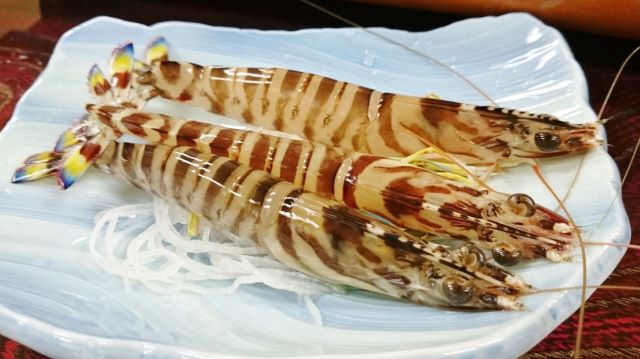
The appearance of Kuruma prawn (Kuruma ebi)
There are three types of raw shrimp: Ama ebi, Shima eib, and Botan ebi. The Japanese spiny lobster (Ise ebi), which looks very glamorous, is not suitable for Nigiri sushi because of its high water content and therefore bland taste. However, it is a must for offerings to the gods and celebratory occasions. Shiba shrimp (Shiba ebi) is an essential ingredient in Oboro, but is not often used in Nigiri sushi. Kurozako ebi and Togekurozako ebi, which are bycatch from the snow crab fishery, have a wonderful raw taste and are used as sushi toppings in some regions. There are many other small shrimps, but they are often consumed locally due to lack of stable supply.
There are two species of shrimp called Sweet shrimp (Ama ebi), information on which can be found below. There are species called Ama ebi in various parts of Japan, including Hime ama ebi caught in Kinko Bay in Kagoshima Prefecture and Golden shrimp (Jinken ebi) caught in Suruga Bay.
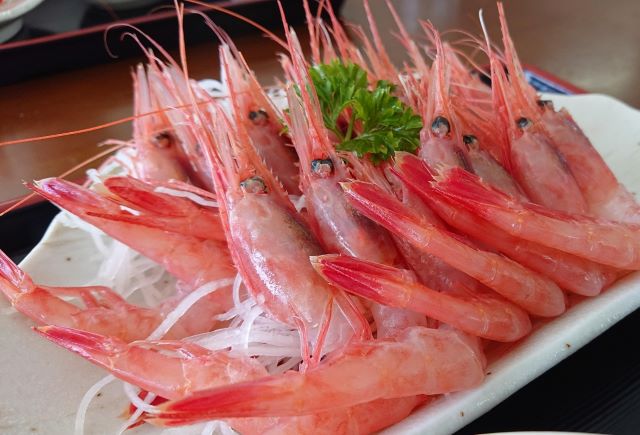
The appearance Sweet shrimp (Ama ebi)
Botan shrimp (Botan ebi) also exists in several varieties, information on which can be found below. We would like to emphasize that Argentine red shrimp (Aka ebi), which used to be a very popular substitute for Botan ebi and is still distributed under the name Aka ebi, is also a natural shrimp. The Argentine red shrimp is a close relative of the Jack-knife shrimp (Higenaga ebi), which is found from Shizuoka to Kagoshima prefectures and is also used as sushi material in some regions. In addition, Spot prawns imported from the United States and Canada are openly sold as botan ebi. Rarely, a species called Terao botan ebi, caught in Sagami Bay and Sanriku, is also distributed.
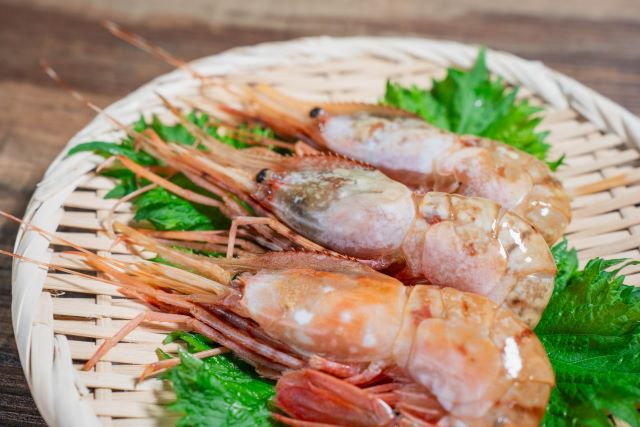
The appearance of Botan shrimp (Botan ebi)
Please see below for information on Morotoge shrimp (Shima ebi). Since it is not widely distributed, the number of sushi restaurants that serve it is limited.
Some rare shrimps include cherry prawns, which can only be found in Japan and Taiwan, and white shrimp, which can only be found in Toyama Prefecture. Please check below for information on them.
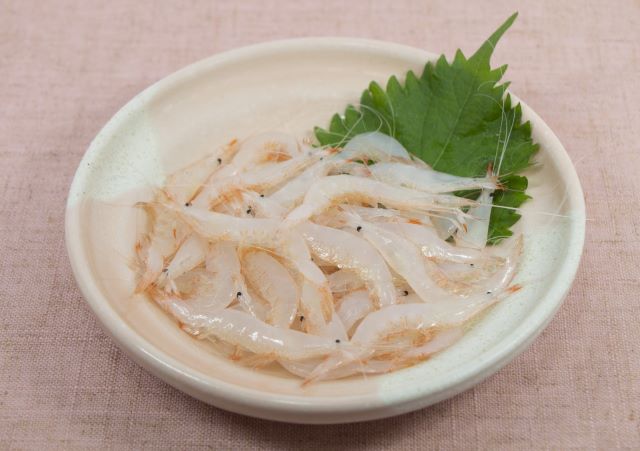
The appearance of Broad velvet shrimp (Shiro ebi)
Finally, we would like to introduce Budou ebi. This shrimp is caught mostly in Sanriku and Rausu in Hokkaido. It is very sweet, and is characterized by its dark grape color when dead, and is considered to be the highest grade of shrimp eaten raw. Budou ebi, caught in Suruga Bay and elsewhere, are grape-colored when alive. To be precise, all three species are different.
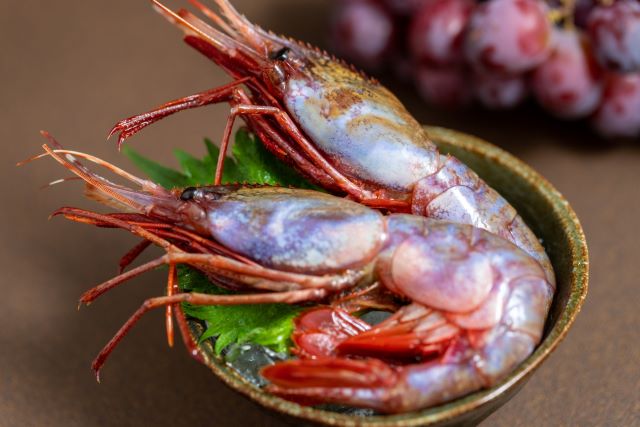
The appearance of Grape shrimp (Budou ebi)